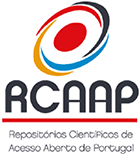“Entalados” on the facades of Lisbon buildings. Sculptural practices in the private construction of the 1950s. The Alvalade neighbourhood
DOI:
https://doi.org/10.48751/CAM-2017-7211Keywords:
Integrated sculpture, Public art, Artistic stonework, EntaladosAbstract
In the 1950s, a specific sculptural practice became popular in the city of Lisbon, serving the interests of the private construction. The “entalados”, as Keil do Amaral called them, were sculptures and reliefs which were placed in narrow spaces in the facades of the residential buildings, usually surmounting the main entrances. Although often made by sculptors with academic training, these works never achieved work-of-art status. Being considered decorative elements, they appeared in the buildings throughout the city, with little control by public authorities, contrary to monumental sculpture and statuary. Considering the set of sculptural interventions in Alvalade, this text contextualizes the appearance of the “entalados”, describes this sculptural practice – highly criticized by Keil do Amaral and other modern artists and architects –, showing, through a specific case, how its presence sometimes clashed also with the official sensibilities of the time.
Downloads
Downloads
Published
How to Cite
Issue
Section
License
Copyright (c) 2017 Inês Marques

This work is licensed under a Creative Commons Attribution-NonCommercial 4.0 International License.
The authors retain copyright and grant the journal the right of first publication, with the work simultaneously licensed under the Creative Commons Attribution License CC BY-NC 4.0 which allows sharing and adapting the text as long as its authorship is correctly attribbuted with recognition of the initial publication in this journal.








